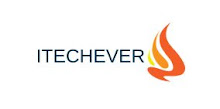Unified Extensible Firmware Interface (UEFI) is a specification for a software program that connects a computer's firmware to its operating system (OS). UEFI is expected to eventually replace BIOS.
Like BIOS, UEFI is installed at the time of manufacturing and is the first program that runs when a computer is turned on. It checks to see what hardware components the computing device has, wakes the components up and hands them over to the operating system. The new specification addresses several limitations of BIOS, including restrictions on hard disk partition size and the amount of time BIOS takes to perform its tasks.
Because UEFI is programmable, original equipment manufacturer (OEM) developers can add applications and drivers, allowing UEFI to function as a lightweight operating system.
The Unified Extensible Firmware Interface is managed by a group of chipset, hardware, system, firmware, and operating system vendors called the UEFI Forum.The specification is most often pronounced by naming the letters U-E-F-I.
Continue reading about UEFI:
Andrew Regenscheid, a mathematician with the computer security division of the National Institute of Standards and Technology (NIST), is concerned about the security issues UEFI presents.
Sebastian Anthony demystifies the long-overdue BIOS replacement.
Some Feature Of UEFI:
Quick summary
- UEFI allows firmware to implement a security policy
- Secure boot is a UEFI protocol not a Windows 8 feature
- UEFI secure boot is part of Windows 8 secured boot architecture
- Windows 8 utilizes secure boot to ensure that the pre-OS environment is secure
- Secure boot doesn’t “lock out” operating system loaders, but is a policy that allows firmware to validate authenticity of components
- OEMs have the ability to customize their firmware to meet the needs of their customers by customizing the level of certificate and policy management on their platform
- Microsoft does not mandate or control the settings on PC firmware that control or enable secured boot from any operating system other than Windows









0 comments: